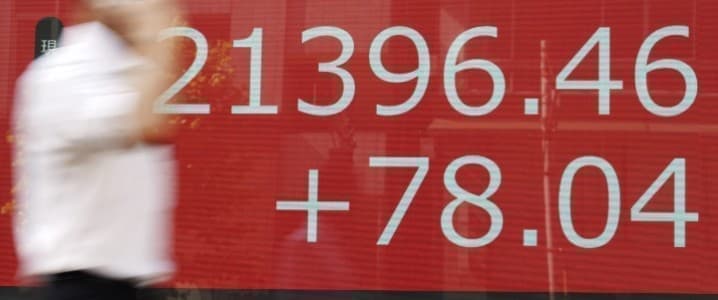Following the escalation in the Russia-Ukraine crisis, oil prices surged within striking distance of $100 a barrel early on Tuesday, when Brent hit $99.50 before retreating to the $97 mark.
The already priced-in geopolitical risk premium is probably more than $10 per barrel, analysts say, and most of them believe it’s just a matter of when—not if—oil hits the triple-digit threshold.
Although the Ukraine premium is a large part of the current rally towards $100 oil, there are several bullish fundamentals that could keep prices elevated even if a worst-case scenario of a conflict with subsequent Western sanctions on Russian energy exports does not materialize.
These bullish factors include robust growth in global oil demand, which is set to exceed pre-COVID levels this year, the lowest commercial inventories in developed economies in seven years, and the lowest crude inventories at Cushing, Oklahoma—the designated delivery point for WTI Crude oil futures contracts—since September 2018.
On the bearish side, an imminent Iran nuclear deal could send oil prices down to the low $90s or even below $90 as the market tightness would see relief at some point later this year when U.S. sanctions on Iran’s oil exports are removed.
In recent days, reports have intensified that the indirect talks between the United States and Iran about returning to the 2015 deal are in their final stage and are said to be “about to cross the finish line,” according to a tweet from Russia’s envoy Mikhail Ulyanov on Tuesday. “At the final stage of the #ViennaTalks intensive consultations in various formats are underway,” Ulyanov said a few hours later.
Iran could bring 1.3 million barrels per day (bpd) to the global oil supply, although this would take some time, including technical time, for reinstating oil payment settlements and Iranian foreign accounts. At any rate, if a deal is reached, more supply would bring relief to the tight oil market.
As the past two years have shown, another bearish factor for oil would be a new infectious vaccine-jumping COVID variant that could prompt governments to re-impose restrictions. Expected Fed interest rate hikes could also have some slowdown effect on rebounding economic growth.
An Iran agreement, a Fed hike, and de-escalation of the Ukraine situation by the end of March could see oil prices around $80 in the second quarter, and at around $70-75 in the second half of 2022, Michael Lynch, petroleum economics and energy policy analyst, writes for Forbes.
Still, as-is, demand appears to be strong, the physical market is very tight, and as Omicron-related restrictions are lifted in many economies, global demand is expected to beat the 2019 levels in the third and fourth quarter this year and average more than the 2019 demand volumes for the whole of 2022.
Then, there is the growing gap between the OPEC+ nominal production increases and the actual supply to the market from the alliance.
If OPEC+ continues to fail in delivering its oil production targets amid rising demand and inventories at multi-year lows, oil prices will remain under upward pressure and are set for more volatility, the International Energy Agency (IEA) said earlier this month. The gap between OPEC+ output and its target levels surged to as much as 900,000 bpd in January, the IEA said in its Oil Market Report for February.
Moreover, major investment banks had started to predict $100 oil was coming even before the recent escalation in Ukraine. Many of them continue to believe $100 is justified right now. If the crisis escalates into a conflict that would trigger Western sanctions on Russia’s oil – accounting for 12 percent of global supply – prices could even hit $150 a barrel, J.P. Morgan said earlier this month.
“Such is the fundamental market tightness in oil today that under a best-case scenario in which tensions between Russia and Ukraine de-escalate, the oil price would likely merely drop to $84 bbl. But any disruptions to oil flows from Russia in a context of low spare capacity in other regions could easily send oil prices to $120 bbl. A halving of Russian oil exports would likely push the Brent oil price to $150 bbl,” Natasha Kaneva, Head of Global Commodities Strategy at J.P. Morgan, said.
Bank of America says that a Ukraine conflict could send oil higher by $20 a barrel than current levels, but it also notes that “A weaker dollar trend and a pro-growth macro backdrop, if it indeed occurs, could support crude near triple digits in the second half of the year.”
The world’s biggest independent oil trader, Vitol, sees further room for oil prices to rally, based on bullish fundamentals, as it expects global oil demand to surge in the second half of 2022.
By Tsvetana Paraskova for Oilprice.com
More Top Reads From Oilprice.com:
- Russia Speaks Out Against High Oil Prices As Brent Nears $100
- Australia Eyes Key Role In Booming Asian LNG Market
- An Increase In Polysilicon Production Could Help Curb Solar Power Prices


















